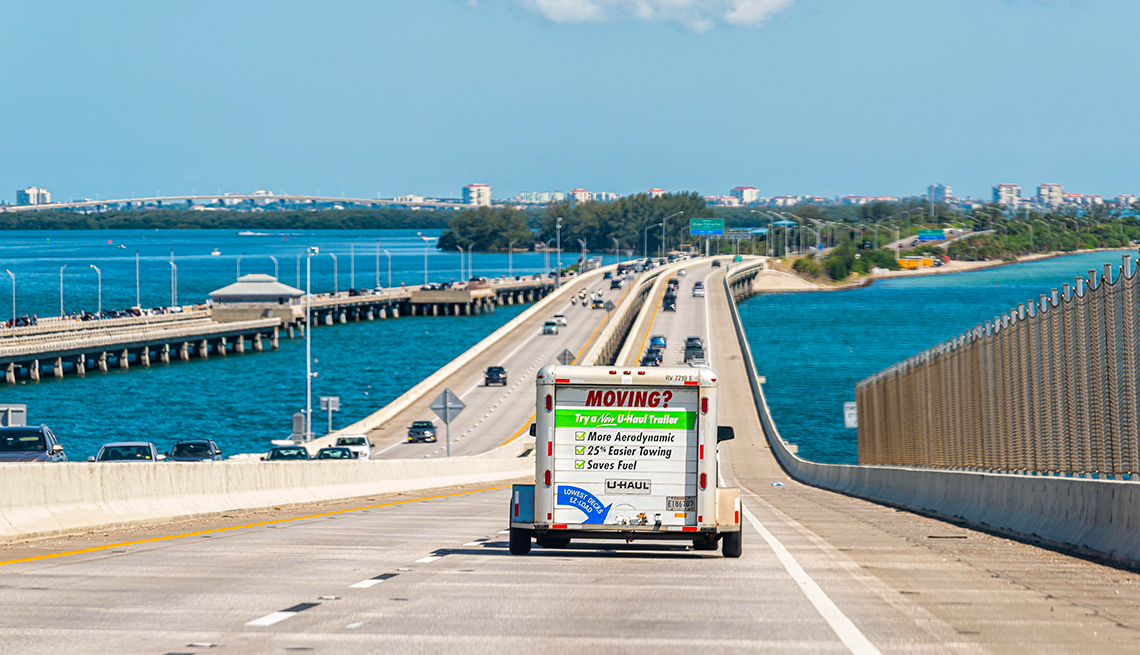
- Select a language for the TTS:
- UK English Female
- UK English Male
- US English Female
- US English Male
- Australian Female
- Australian Male
- Language selected: (auto detect) - EN
Play all audios:
“You could be making a move to downsize but actually find yourself with higher costs, especially related to property taxes,” she says. “People really need to think through all around what
the impact is.” FLORIDA TOPS STANDINGS About 234,000 Americans relocated in retirement in 2022, according to Hire A Helper, which reviewed data from the Census Bureau’s Current Population
Survey and its Annual Social and Economic Supplements for 2022. TOP STATES RETIREES ARE MOVING TO (AND LEAVING FROM) About 234,000 retirees moved in 2022, according to Hire A Helper's
analysis of U.S. Census Bureau data. These states attracted the biggest share of interstate relocations: * FLORIDA (11.8% of inbound moves) * NORTH CAROLINa (9.6%) * MICHIGAN (6.6%) *
ARIZONA (5.9%) * GEORGIA (5.5%) And these five saw the most retiree departures: * OREGON (9.8% of outbound moves) * MARYLAND (7%) * IDAHO (3.4%) * TEXAS (3.3%) * VIRGINIA (2.9%) That’s up 4
percent from the previous year but still down steeply from the nearly 400,000 retiree moves in 2020, when job, health and family concerns related to the emergence of COVID-19 drove a big
increase in moves overall, a prior report by the company found. After two years as the number two state in the Hire A Helper standings, Florida took over the top spot in 2022, with nearly 12
percent of all interstate retiree migrations ending in the Sunshine State. “Florida’s kind of got it all,” Kisner says. “They’ve got the warm weather, low cost of living and no [state
income] taxes. A lot of people dream of retiring to the beach, and Florida still has affordable beaches, whereas, say, Southern California, there’s no affordable beaches.” The Palm
Bay-Melbourne-Titusville area on central Florida’s Atlantic Coast was the most attractive metropolitan destination, drawing 9.2 percent of retirees moving to metro regions. The area is
particularly popular with early retirees: People ages 55 to 64 made up 37 percent of older transplants to the region, 11 points higher than the national share for that age group. Oregon was
the state retirees were most likely to leave, with nearly 10 percent of boundary-crossing migrants exiting from there. Maryland ranked second, followed by Idaho, Texas and Virginia. The
latter two were also in the top tier of states to which retirees moved, ranking ninth and 10th, respectively. Though low unemployment and abundant outdoor recreation have made Oregon a
popular landing spot, especially for younger adults, it also ranks among the states with the highest cost of living. “With people looking to move and save money, I think Oregon does make
sense as an exit point,” Marquit says. The Idaho resident adds that in recent years, that part of the country has “been unseasonably cold. So if you’re out in Oregon and going, ‘Why is it
cold, and why does it cost so much?’, moving to someplace like Florida or North Carolina makes sense.”









